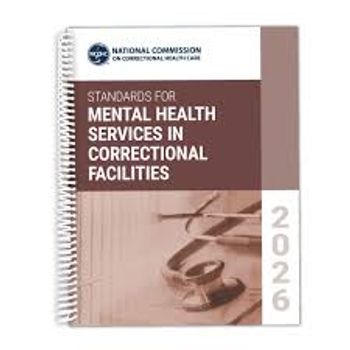
- Psychiatric Times Vol 19 No 7
- Volume 19
- Issue 7
Couples Therapy and Psychopharmacology
Psychopharmacology can be useful in all stages of couples' therapy. Using a high-functioning couple as a case example, the author illustrates how psychopharmacology, together with psychotherapy, can be used to facilitate treatment success.
Psychopharmacology in couples work can be useful in all stages of therapy: 1) to control initial symptoms; 2) to improve communication; 3) to modulate biological temperaments related to personality issues; and 4) to reduce excessive stress during life transition (Resnikoff, 2001).
This article describes the value of psychopharmacology as a small, but important, part of stage-3 therapy for a high-functioning couple. The use of psychopharmacology in this case was to modify lifelong temperaments. (For more information on the use of psychopharmacology to control various temperament dimensions, please see the figure at
"Carol" and "John" requested couples' counseling. They had been married for 16 years and had a 14-year-old child, "Daniel." Quite suddenly, John asked for a divorce. Carol was stunned and wished to preserve the marriage. The couple came to therapy to consider reconciliation. (In the following presentation, changes have been made to protect the couple's identity.)
At the beginning of therapy, John explained how he had felt rejected and angry for years and now felt better since he was ready to get a divorce and move on. He complained about the lack of attention, companionship and sex.
Carol felt on the defensive. She was upset that John would even consider breaking up the family unit. She claimed she had not realized John's complaints, in spite of the fact that he stated he had pointed out grievances for years. Although Carol thought that John lacked concern for her, she felt willing to listen now and to try to prevent a divorce. She was especially concerned about preserving the family for Daniel's sake.
I recommended a full evaluation before considering divorce, knowing that without greater awareness, similar problems and personality conflicts would likely be repeated in a new relationship. I also know from clinical experience that a marriage can frequently be the scapegoat for long-term premarital personality issues. In this case, I believed that Daniel's welfare would be best served if the marriage could be saved. Daniel came to several later sessions. He was basically well-adjusted and confirmed the dynamics of the marriage.
I presented divorce and reconciliation therapies as having many similarities, including the understanding of grievances, attachment disruptions, power and boundary dynamics, complementary personality styles, historical personality patterns, biological temperaments, and life-transition issues. If divorce occurred, therapy would focus on preventing excessive revenge or splitting Daniel's loyalty, as well as on reinforcing continued cooperative parenting. If John and Carol ended their marriage, therapy would also monitor the grieving process.
Marital partners often have complementary but conflicting personality styles. Carol was a perfectionist and worked long hours. She was perceived as kind, caring and giving, even though she was not very expressive. John, in contrast, was more laid back, expressive and needy. He craved companionship, romance and family outings. The marital personality polarities included his feeling versus Carol's thinking.
Diagnostically, John had narcissistic (insecure) personality traits. This categorical diagnosis was considered in addition to a dimensional diagnosis of mild depression along the reward/approval seeking, depressive temperament spectrum. Carol was diagnosed with obsessive-compulsive personality traits (with a controlling personality style). In addition, she was diagnosed as mildly anxious along the persistent, anxious temperament, obsessive-compulsive disorder (OCD) spectrum.
Initially, the process of therapy helped Carol respond to John's wishes. John's threat to leave the marriage seemed to capture Carol's attention. She cut back her working hours and began to seek pleasure for herself and with John. She was taught to restate and understand John's wants and needs. These changes helped Carol's flexibility as an individual and helped John as well. Carol demonstrated a lessened concern for appearances, became more available to her friends and family, and developed more empathy.
John's lack of attention to Carol's feelings of hurt, aloneness and betrayal was identified, but corrective work on this lack of reciprocity was delayed until later. After six months of weekly therapy, with Carol changing and being more available, John was more aware of his responsibility for problems in the marriage. He became more depressed and reflected about other relationships where he expected too much.
At this point in the therapy, I introduced medication for John, explaining that it would help relieve his suffering. This presentation resonated with his basic sensitivity to feelings and emotional life. Bupropion (Wellbutrin SR) 200 mg daily helped John tolerate his sadness and begin to think about his childhood experiences. I selected this noradrenergic/dopaminergic enhancer knowing that sexual side effects, especially important to John, would be minimal. I speculated that these reward-system neurotransmitters would match John's reward-seeking style. Also, John's depression was characterized by sadness and lethargy without the complications of impulsivity, agitation or loss of day-to-day functioning. A few weeks later, as the marriage crisis became more acute, Carol started citalopram (Celexa), 20 mg/day. To match Carol's rational approach to life and her need to be in control, I presented this medication as an adjunct to control her anxieties, worries and obsessive-compulsive tendencies. I selected this particular serotonin-enhancing medication knowing that its sedative properties would be especially helpful with Carol's agitation and sleep difficulties.
John felt that the buproprion made it possible for him to face memories that were too difficult to confront in previous therapy. Historically, John's father was foreground in his concerns. The father, an alcoholic, alternated between expressing love and hate. John's memories resonated with his son's current developmental issues. John's mother was generally distant and passive, and John was concerned that he also was too passive. Individual sessions with John focused on "divorcing" his father--that is, leading his own life without being preoccupied with the father's alcoholism, love or lack of love. It became clearer that John wanted Carol to be the parent he never had, to be competent, as well as adoringly and lovingly submissive.
After eight months of therapy, John decided to move out. He then revealed that he had an outside romantic relationship with his secretary. John's secrecy complicated both the trust within the marriage and the progress of therapy. John thought he was behaving like his mother, who lacked directness and honesty; I pointed out the similarity to his father's deceptions. John began to understand the emotional meaning of the affair and missed his son. He decided to put his outside relationship on hold and move back into the home. John compassionately told his secretary that although he loved her, he felt a moral and ethical obligation to preserve his family.
John agreed that his return home would be more like a roommate relationship until a new contract could be worked out in the marriage and the decision regarding divorce was resolved. Both John and Carol stated that their goal was a truly intimate relationship.
During the separation, Carol had a number of individual sessions. Historically, her upbringing emphasized good work habits and diligence. Her father had been a worrier. Like her father, she was rational and emphasized facts rather than elaborations of meaning or abstractions. As a protection against her father's sometimes intense anger, Carol had simply avoided him with hard work and projects. Carol stated that the citalopram made it easier to control her defensiveness; reduce her extensive strategizing for saving the marriage; and enhance her connection with her family, colleagues and friends. The medication helped her ignore her almost constant rumination about John. In addition, she could fall asleep more easily.
John and Carol decided to continue their marriage. John has begun to understand that his demands on Carol reflected his unmet lifelong need for greater affection. Carol and John have gradually reversed roles, with John becoming more assertive and less needy and Carol accepting more dependency and closeness. They are beginning to discuss what their life will be like after Daniel leaves for college.
Discussion
Therapy with John and Carol moved through the four stages mentioned at the beginning of this article. In the initial stage of therapy, John's complaints were addressed in a concrete way, helping him feel that the therapist took his concerns seriously. In the second stage, in accord with the work of Johnson (2001), the "attachment disruptions" were clarified. That is, John felt betrayed by Carol's lack of attentiveness, while Carol felt betrayed by John's desire to break the marriage contract and his inattention to her needs. With time, however, John and Carol developed greater trust and better communication of their needs, permitting a historical and developmental exploration in the third stage of therapy. At this point, in the third stage, medication supported John and Carol by increasing the flexibility of their personalities. Finally, in the fourth stage, John and Carol were able to consider mid-life issues and the challenge of living life to its fullest, as Daniel approached emancipation. Hopefully, during this transition, John and Carol will also be able to accept the limitations of their upbringings and the sacrifices of parenting.
Although medications were used in this case primarily to address stage-3 personality issues, psychopharmacology can effectively complement therapy at any stage. For John and Carol, psychopharmacology also reinforced the initial stage-1 behavioral changes and the stage-2 corrections of their polarized power balance and intimacy styles.
Therapy with Carol and John highlighted the issues of boundary and power dynamics. Therapy included a discussion of complementary styles and temperaments. In this couple, traditional gender personality styles were reversed. Generally speaking, additional tension occurs in couples where the woman is more directive and distant than the man. With Carol and John, medication helped balance gender style polarities and reduce tension without making Carol overly submissive. Both pharmacotherapy and psychotherapy were intended to help John and Carol move toward the middle ground of their interpersonal and internal personality polarities. That is, John would gain a broader perspective on his feelings and take charge of his own needs; conversely, Carol would be able to tolerate some dependency and give up some control.
Using the ideas of Cloninger (1997), the clinician can more fully integrate biological temperament issues and learned character qualities. In biological temperament, John was especially sensitive to outside rewards and approval. Carol was excessively persistent in problem-solving. In learned character, both Carol and John had difficulty with interpersonal reciprocity.
Although not yet fully supported by research, I believe sorting out biological from learned factors in personality style will help form the basis for using medications to enhance personality flexibility. New research on biological aspects of attachment continues to evolve. For example, Young et al. (2001) have described oxytocin and pitocin as neurotransmitters that enhance attachment behaviors in animals.
My personal and professional biases toward preserving families and the need for at least exploring marital dynamics before divorce were openly shared with John and Carol. In this therapy, I could feel the pull of emphasizing practical problem-solving with Carol and the pull of caring for John. The main transference and counter-transference, however, was directed back to the couple and their interaction. With Carol and John, I felt comfortable as a psychopharmacologist, problem-solver and personality therapist. I felt I had relearned lessons about obsessive versus narcissistic style polarities, accepting limitations in life and balancing inner needs with outer responsibilities.
Conclusion
As illustrated by John and Carol, psychopharmacology can be used in an off-label way to treat maladapative but subclinical expressions of temperament. This use of medication is different from the more traditional use to address Axis I diagnostic symptoms. It is important to emphasize that medication was a small, but important, adjunct to Carol and John's therapy. Psychotropic medication, such as the selective serotonin reuptake inhibitors and buproprion, may have both acute and long-term side effects that need to be weighed carefully in the informed consent process. For example, psychomotor agitation, weight gain and elevated prolactin levels may be troublesome for some patients taking SSRIs; high blood pressure and memory loss can occur with buproprion. Long-term use should be carefully re-evaluated in the course of treatment. Nevertheless, personality and couples work represent arenas where integration of various modalities, including psychopharmacology, is crucial. The challenge is to consider a truly biopsychosocial approach that includes problem-solving, enhancing attachment and personality flexibility, and embracing difficult life transitions.
References:
References
1.
Cloninger CR, Svrakic DM (1997), Integrative psychobiological approach to psychiatric assessment and treatment. Psychiatry 60(2):120-141.
2.
Johnson SM, Makinen JA, Millikin JW (2001), Attachment injuries in couple relationships: a new perspective on impasses in couples therapy. J Marital Fam Ther 27(2):145-155.
3.
Resnikoff R (2001), Bridges for Healing. Integrating Family Therapy and Psychopharmacology. Philadelphia: Brunner-Routledge.
4.
Young LJ, Lim MM, Gingrich B, Insel TR (2001), Cellular mechanisms of social attachment. Horm Behav 40(2):133-138.
Articles in this issue
over 23 years ago
Honorsover 23 years ago
All the Sad Doctorsover 23 years ago
Commentary: On Formulating Mental Health Codes for the Worldover 23 years ago
Who Should Pay For Health Care Reform?over 23 years ago
Options for Treatment-Resistant Depressionover 23 years ago
Integrating Treatment in Eating Disordersover 23 years ago
Making Combined Therapy Workover 23 years ago
Can A Split-Treatment Model Work?Newsletter
Receive trusted psychiatric news, expert analysis, and clinical insights — subscribe today to support your practice and your patients.




